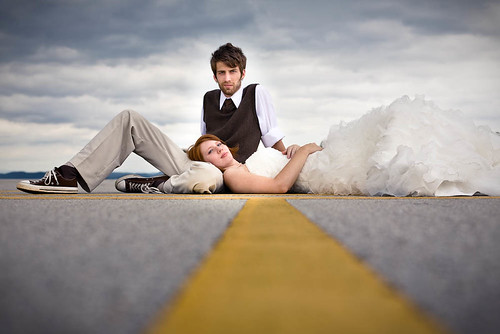Tips for the Amateur Wedding Photographer
Your wedding day is probably one of the most important days of your life, and capturing it on film means you can relive those memories again and again. Because these photos are so important, the pressure to get them right can be huge. If you’re in charge of capturing someone’s big day, here are some tips to help you get the most out of those pictures, and remain calm while you’re doing it.
1. Discuss Expectations: When photographing a wedding, it’s important that the bride and groom know what to expect. It’s a big responsibility and you don’t want to disappoint. Make sure that their expectations are in line with what you can produce. Show them your work and be realistic about your ability.
2. Make a Shot List: In addition to discussing expectations, make sure that you create a shot list. Compiling a list to check off as you’re working means you won’t forget any important moments (or people!).
3. Appoint a Coordinator: In order to capture all the people on your list, it helps to have a coordinator from each side of the family to round up any strays. This is especially helpful if you don’t know everyone, and lends a little authority when you’re directing group shots.
4. Check Out the Location: This can help when planning particular shots. Go to the ceremony location and familiarize yourself with the reception venue and scout out the best places to frame your subjects. Thinking about backgrounds can help you prepare for formal group shots too (look for uncluttered areas out of direct sunlight away from people wandering around).
5. Be Prepared: This is vital, as preparing the situations you can control puts you in a better position to deal with the ones you can’t. Make sure batteries are charged, memory cards are blank, and turn off the sound on your camera (no one likes a beep when the couple are exchanging rings). Think about the itinerary and give yourself enough time to get the shots you need.
6. Expect the Unexpected: At a wedding, anything can happen. Bad weather and other problems may seem like a nightmare at the time, but capturing these little mishaps can add a great dimension to the final photographs (and are guaranteed to raise a smile).
7. Use Two Cameras: Different lenses make for a great variety of shots, so having a second camera already set up can be really useful. If you’re at all nervous, a backup photographer can take the pressure off (and mean that you don’t have to move around as much during the ceremony).
8. Be Bold: Use the authority the bride and groom have given you. You’re there for a reason, so don’t be shy!
9. Don’t Discard Mistakes: With digital cameras there’s always a temptation to delete photos that don’t look great initially. Don’t do it! Post-production can turn these into the stars of the show and you never know what you might have unwittingly caught in the background.
10. Don’t Forget the Details: Finally and perhaps most importantly are the details of the wedding. The little things are what make the day unique – flowers, place settings, wedding rings, shoes and backs of dresses are all important wedding details not to be forgotten.




